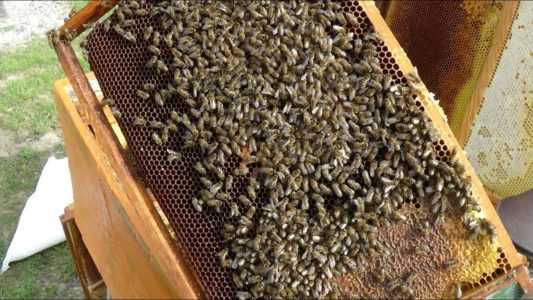The bruise honey plant (blush) belongs to the borage family. This genus includes perennial, biennial and annual grasses. The honey plant produces good yields of pollen and nectar. It is often sown near apiaries.
The content of the article
- 1 Significance for agriculture
- 1.1 Appearance
- 2 Agrotechnics
- 3 Honey productivity
- 4 Useful Properties
Significance for agriculture
A bruise honey plant, characterized by exceptional unpretentiousness. It can be found along roads, on the slopes of ravines, abandoned plots of land, wastelands. Moreover, the grass feels great even in arid climates and on poorly moistened soils.
In agriculture, it is cultivated as a valuable melliferous herb. The plant is a bruise melliferous plant, which gives high bribes during the period of honey collection. It is specially sown in the adjacent territories, thereby providing bees with a rich supply of pollen and nectar.
In the fields, the grass, melliferous bruise, can clog the crops of clover and other forage plants!
There are herbs of the borage family in the steppes and forest-steppes of the European part of our continent, as well as in the foothills of the Caucasus.
The most important for beekeeping is the common honey plant. The crooked variety is less commonly cultivated (mainly in the Crimea and the Caucasus).
Appearance
The variety, known as the common one, is a biennial herb that reaches a height of 30 to 100 centimeters. Its stems are covered with characteristic fluffy bristles. Lateral branches are short, with a grayish bloom. The leaves are lanceolate, sitting close to the stems.
Inflorescences with curls of irregular shape. The color is blue-purple, pink in the buds. The color change occurs within an hour from the moment the bud opens.
Honey plant bruise photo:
A characteristic feature is the appearance of the first flowers in the second year after sowing in the ground.
During the first year, the grass grows up to 30-40 centimeters, stems and lateral branches develop. The next season, the bruise honey plant comes out from under the snow already formed into a socket. Until the beginning of summer, its growth is slow.
The timing of the mass formation of buds directly depends on the climate. In warm regions, flowers develop from mid-June, and in cooler regions, the color appears from its second decade. In the same period, the stems noticeably grow.
The grass throws out curls, in which the flowers bloom first from below and then from above. Moreover, each of the flowers opens in turn – the first blooms for two days, then the second joins it, and two days later the third, and so on.
The average flowering time of a single flower is 35 to 48 hours. Total plants – up to 1,5-2 months. The blooming process begins in the late morning and actively continues until two in the afternoon, and then slows down. During the same short period, the appearance of the inflorescences changes – from pink to blue or purple shade of the petals.
Agrotechnics
As already noted, the plant is undemanding to the quality of the soil. It is drought tolerant and adapts well to rocky areas.
Medonos bruise agrotechnics:
- The recommended sowing time is the early spring period. Each hectare of prepared soil requires 4 to 6 kilograms of seeds.
- Mixing with phacelia is allowed. In this case, the site will benefit the apiary starting from the first year. And the bruise will improve honey flow next summer.
- A bruise can be in one place for several years in a row! This does not affect the flowering intensity in any way.
- Embedding in the ground is carried out in rows with a distance of 25-30 centimeters between individual grass bushes. The sowing depth is no more than a centimeter! Only in this case will the honey plant rise completely. Dense shoots must be thinned out.
To get seeds for propagation, you need to carefully monitor the ripening of the fruit! It is uneven, and overripe seeds fall to the ground very quickly. On average, one hectare gives 25-30 kilograms of seeds.
Honey productivity
Bruise is a herb melliferous plant, highly valued by beekeepers for record productivity. The plant is readily visited by flight bees. It collects pollen of a characteristic dark blue color.
And the yield of honey per hectare averages 250-400 kg (in some cases 600-700 kg!).
The resulting honey is very sweet – the sugar content in the nectar is about 45-46 percent. It is dense in structure, however, crystallization does not occur for a long period. Light amber color. The aroma is delicate, with light herbal notes.
In terms of taste, honey belongs to the first grade and is highly valued in the market.
Useful Properties
In folk medicine, bruised honey is recommended for the treatment of the respiratory system:
- with sore throats;
- with bronchitis and pneumonia;
- to facilitate well-being with acute respiratory infections.
It is also used for insomnia, and as a tonic and immunity-enhancing agent.
Honey is suitable for cosmetic procedures carried out at home – like other varieties of this bee product, it is able to nourish the skin with vitamins, accelerate its regeneration, and make pigmentation less noticeable.
